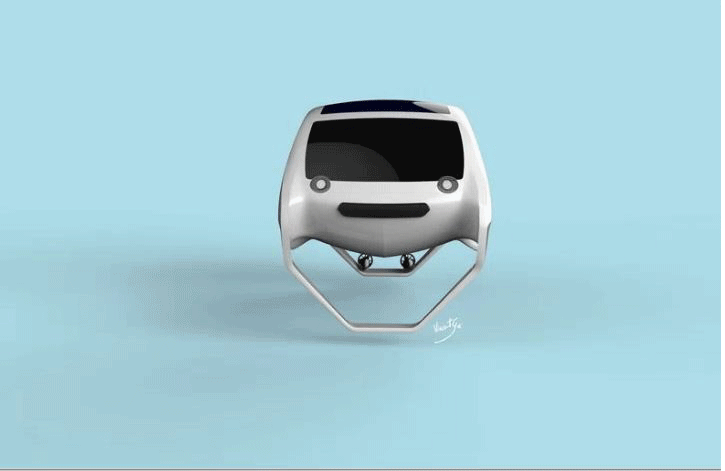It may be a thing as soon as next summer.



The flying river taxi, which floats above the water
To unclog the busy streets of Paris, two entrepreneurs are building an egg-shaped river shuttle that will essentially fly above the Seine, the next iteration of which will be summoned by a smartphone and piloted by a robot.
If that's not incredible enough, a founder of SeaBubbles said on Thursday the company raised 500,000 euros ($555,000) to do just that, with backers including the founder of drone-maker Parrot SA, Partech Ventures and the French government-backed BPI fund. Another funding round will take place by the end of August to develop a taxi app and docking stations around the pod.
The company wants to build battery-powered bubble-shaped ships that hover a few inches above water and transport as many as five people at a time. The founders intend to be operating by the summer of 2017.
As it seeks more cash to turn its bubbles into cabs, the startup says it’s reached out to car-hailing company Uber Technologies Inc. as well as construction company Vinci SA and luxury-goods maker LVMH. There are discussions but no commitments have been made.
“You’ve got packed roads and empty waterways in a lot of cities -- there’s an obvious opportunity,” co-founder Alain Thebault said in an interview. “We want to build water taxis.”
Founders Anders Bringdal and Thebault, a surfer and a math-loving sailor respectively, together broke the record for speed on a floating sailboat they’d designed in 2009. They said SeaBubbles has the support of Paris Mayor Anne Hidalgo, who has pledged to cut pollution in the city.
Each shuttle will carry five people, including a pilot, but the goal is to forgo the pilot and make the system fully autonomous in a few years once regulation allows it, Thebault said. Currently, navigation rules on the Seine don’t permit the operation of vessels that lack a skipper. Carmakers, battery vendors and software engineering companies have expressed interest in helping develop upgrades and scale production, he said, declining to cite any names.

The Sea Bubbles are coming
The bubbles would get a lift and hover above water thanks to a similar physics phenomenon to the one that propels their record-setting Hydroptere sailboat in the air.
The startup will sell the pods to individuals as well as countries, cities and companies, but its founders are still debating whether they want to manage a taxi service themselves or outsource it.
SeaBubbles plans to spend the money from its seed funding round on building full-size prototype pods of 4.3 meters by 2.3 meters (14.1 feet by 7.5 feet), that can go as fast as 25 knots (29 miles per hour). Bringdal and Thebault have so far demonstrated an operational pod one-eighth that size, and they want to showcase the first bubble at the 2017 Las Vegas Consumer Electronics Show in January.
The entrepreneurs are relying on an extensive address book built through years of sailing. On the Hydroptere, the boat they designed in 2009, they hosted guests including Alphabet Inc. co-founder Larry Page, Prince Albert of Monaco and solar-powered plane aviator Bertrand Piccard.
Just wait for the convertible version.







